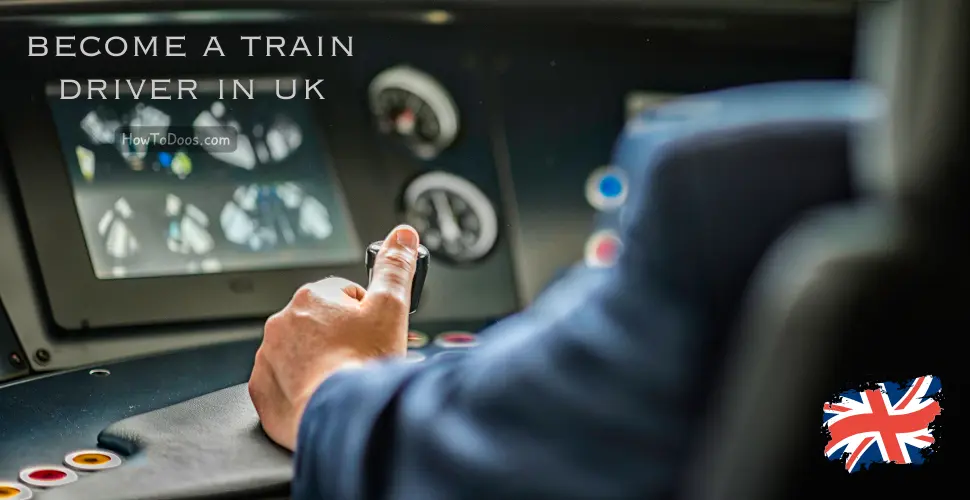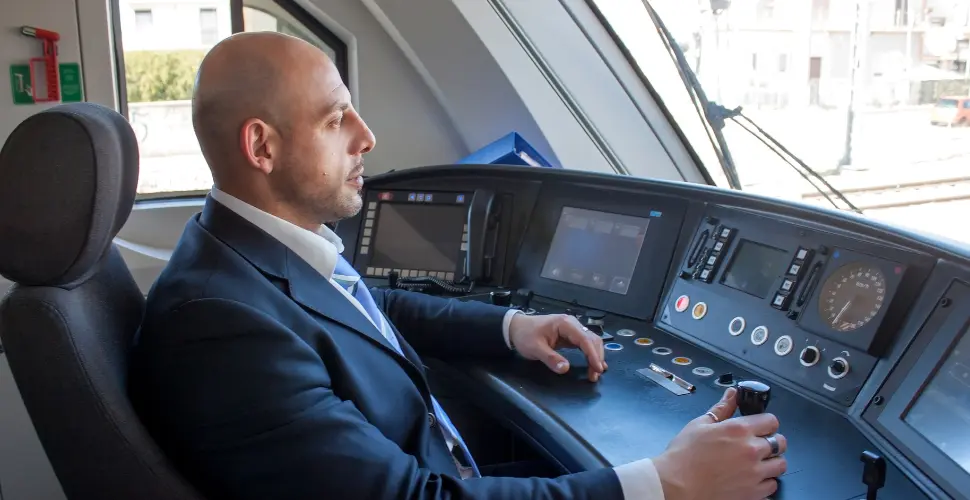How to Become a Train Driver in the UK – A Comprehensive Guide
-
 Sarah Thompson
Sarah Thompson - 15 Aug, 2024

Becoming a train driver in the UK is a career that offers excellent job security, competitive pay, and the chance to be an essential part of the country’s transportation network. If you’re considering this profession, here’s a step-by-step guide that covers everything from meeting the initial requirements to obtaining your train driver’s license.

Why Choose a Career as a Train Driver?
Train driving is a rewarding career with many benefits:
- Job Stability: Train drivers are in high demand, and the role offers long-term job security.
- Good Salary: Train drivers in the UK earn a competitive salary, with opportunities for overtime and additional benefits.
- Independence: You’ll work independently in a responsible role that requires quick decision-making and a strong focus on safety.
- Travel: If you enjoy traveling and seeing different parts of the country, this job provides that opportunity daily.
Steps to Becoming a Train Driver in the UK
1. Understand and Meet the Basic Requirements
Before you can apply for a train driver position, it’s important to ensure that you meet the following essential criteria:
-
Minimum Age Requirement: You must be at least 21 years old. This is a strict legal requirement to ensure drivers have the maturity and experience needed for the role.
-
Educational Qualifications: Most train operating companies (TOCs) require candidates to have at least GCSEs in English and Maths, typically at grades A* to C (or 9 to 4 under the new grading system). Higher qualifications may be advantageous but are not mandatory.
-
Medical Fitness: A comprehensive medical examination is required to ensure you’re physically capable of handling the demands of the job. This includes:
- Eyesight Test: Your vision must meet specific standards, with or without corrective lenses.
- Hearing Test: You must have good hearing, with or without a hearing aid.
- General Health: The medical exam will also check for conditions such as high blood pressure, diabetes, or other health issues that could affect your ability to drive safely.
-
Criminal Background Check: A clean criminal record is mandatory, as the role of a train driver involves significant responsibility for passenger safety.
2. Research and Apply for Train Driver Positions
Once you’re sure you meet the basic requirements, start researching available train driver positions. Here’s how to go about it:
-
Train Operating Companies (TOCs): Visit the websites of major TOCs like National Rail, Network Rail, or Transport for London (TfL). They regularly post job openings for trainee train drivers.
-
Job Boards and Career Websites: Websites such as Indeed, Reed, and TotalJobs also list train driver vacancies.
-
Application Tips: Tailor your application to highlight any relevant skills or experience, such as previous roles in transport, customer service, or jobs requiring high levels of concentration and responsibility. Ensure your CV is updated and clearly outlines your qualifications and any relevant experience.
3. Prepare for and Pass the Train Driver Selection Process
The selection process for train drivers is competitive and consists of several stages designed to assess your suitability for the role:
-
Psychometric Tests:
- These tests evaluate your cognitive abilities, including concentration, reaction times, and hand-eye coordination. Common tests include the Group Bourdon Test, which assesses your ability to concentrate on a task for long periods, and the Mechanical Comprehension Test, which gauges your understanding of mechanical principles.
-
Interviews:
- If you pass the psychometric tests, you’ll be invited for one or more interviews. These can include:
- Competency-Based Interviews: Focused on your previous experiences and how they demonstrate your suitability for the role. You might be asked to provide examples of how you’ve handled stressful situations, worked independently, or followed strict procedures.
- Motivational Interviews: Designed to assess your motivation for becoming a train driver, your understanding of the role, and your long-term career goals.
- If you pass the psychometric tests, you’ll be invited for one or more interviews. These can include:
-
Practical Assessments:
- Some TOCs might include practical assessments in the selection process. This could involve:
- Simulator Tests: Using a train simulator to assess your ability to handle various driving scenarios, such as emergency stops, adverse weather conditions, and adherence to signalling.
- Situational Judgement Tests (SJTs): Evaluating how you would react to hypothetical scenarios that a train driver might face, such as handling delays or dealing with passenger issues.

- Some TOCs might include practical assessments in the selection process. This could involve:
4. Enroll in and Complete Train Driver Training
If you successfully pass the selection process, you’ll be offered a position as a trainee train driver and enrolled in a rigorous training program. The training typically includes:
-
Classroom Training:
- Railway Rules and Regulations: Learn the extensive rules that govern railway operations, including signalling, speed limits, and safety protocols.
- Technical Training: Understanding the mechanics of the trains you’ll be driving, including brake systems, power controls, and emergency procedures.
- Customer Service: Training on how to handle passenger interactions, from making announcements to dealing with emergencies.
-
Practical On-the-Job Training:
- Supervised Driving: Under the guidance of an experienced driver, you’ll start driving trains on actual routes, gradually taking on more responsibility as your confidence and skills grow.
- Route Learning: You’ll learn the specific routes you’ll be driving, including the track layout, speed limits, and any particular hazards or challenges.
- Emergency Handling: Training on how to respond to emergencies, such as signalling failures, track obstructions, or passenger health issues.
- Pass the Final Assessment and Obtain Your Train Driver’s Licence
After completing your training, you will need to pass a final assessment to obtain your train driver’s licence. This assessment is thorough and includes:
-
Theory Exam: A written test covering everything you’ve learned during your training, from railway regulations to technical knowledge.
-
Practical Driving Test: You’ll be tested on your ability to drive a train safely and efficiently under various conditions. This will include demonstrating your ability to follow signals, manage speed, and handle any unexpected situations.
-
Safety Critical Competence: You must prove your ability to make quick, sound decisions in safety-critical situations, ensuring the safety of passengers, staff, and the train itself.
Once you pass this final assessment, you’ll be awarded your train driver’s licence, officially qualifying you to operate trains in the UK.
Career Progression and Opportunities
As you gain experience as a train driver, you may have opportunities to advance in your career:
-
Senior Train Driver: With experience, you can take on additional responsibilities, such as mentoring new drivers and handling more complex routes.
-
Driver Manager: This role involves overseeing a team of drivers, ensuring they adhere to safety regulations, and maintaining high standards of service.
-
Instructor Driver: If you enjoy training others, you could become an instructor, responsible for training new recruits and conducting assessments to ensure they meet the required standards.
-
Specialized Roles: Experienced drivers may have the opportunity to specialize in driving freight trains, high-speed trains, or even international routes.
Conclusion
Becoming a train driver in the UK is a fulfilling career that requires dedication, rigorous training, and a commitment to safety. By following the steps outlined in this guide, you can embark on a rewarding career that offers stability, good pay, and the satisfaction of contributing to the UK’s transport system. If you have a passion for trains and are ready to take on the responsibility, start your journey today and enjoy a successful career as a train driver.

Summary:
Becoming a train driver in the UK is a rewarding career with strong job security, a good salary, and opportunities for advancement. To start, you must meet basic requirements such as being at least 21 years old, holding relevant educational qualifications, and passing a medical exam. The application process involves passing psychometric tests, interviews, and practical assessments.
Successful candidates undergo extensive training that includes classroom learning, supervised driving, and emergency handling. Upon completing the training and passing the final assessment, you will obtain your train driver’s licence, qualifying you to operate trains in the UK. With experience, there are opportunities to progress into senior roles or specialize in different types of train driving. This guide outlines the steps and skills needed to embark on a successful career as a train driver in the UK.
